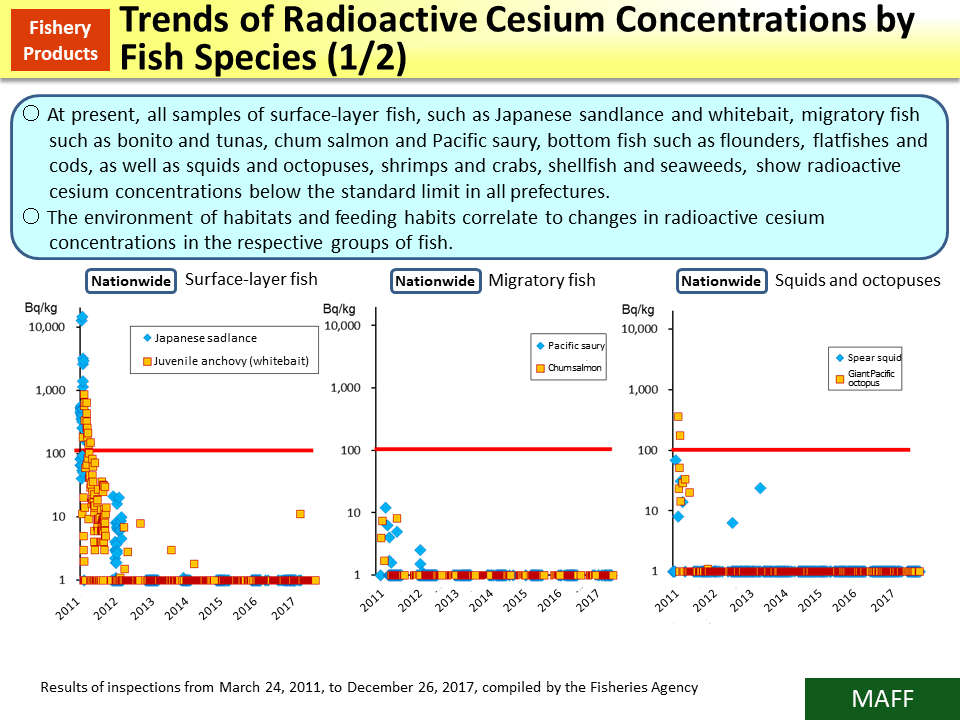Trends of Radioactive Cesium Concentrations by Fish Species (1/2)
The above figures show inspection results concerning radioactive cesium concentrations in fish by fish species with different habitats and feeding habits.
Japanese sandlance, whitebait and other species of surface-layer fish showed high radioactive cesium concentrations immediately after the accident at Tokyo Electric Power Company (TEPCO)'s Fukushima Daiichi NPS, but radioactive cesium concentrations in samples of these fish species at present are all below the standard limit.
Regarding Pacific saury, chum salmon and others that migrate over a wide area in the ocean, radioactive cesium exceeding 100 Bq/kg or exceeding 50 Bq/kg was not detected at all even immediately after the accident.
Marine invertebrates, such as squid and octopus, also showed high radioactive cesium concentrations immediately after the accident, but declines in radioactive cesium concentrations in samples of marine invertebrates were more prompt than in the case of surface-layer fish, and their radioactive cesium concentrations at present do not exceed even 50 Bq/kg. This is considered to be due to the nature of marine invertebrates through which ions freely move in and out to seawater. Due to this nature, radioactive cesium concentrations in marine invertebrates decrease according to radioactive cesium concentration decreases in seawater.
In this manner, the results of the past inspections show correlation between the environment of habitats and feeding habits and changes in radioactive cesium concentrations in the respective groups of fish.
- Included in this reference material on March 31, 2013
- Updated on February 28, 2018

